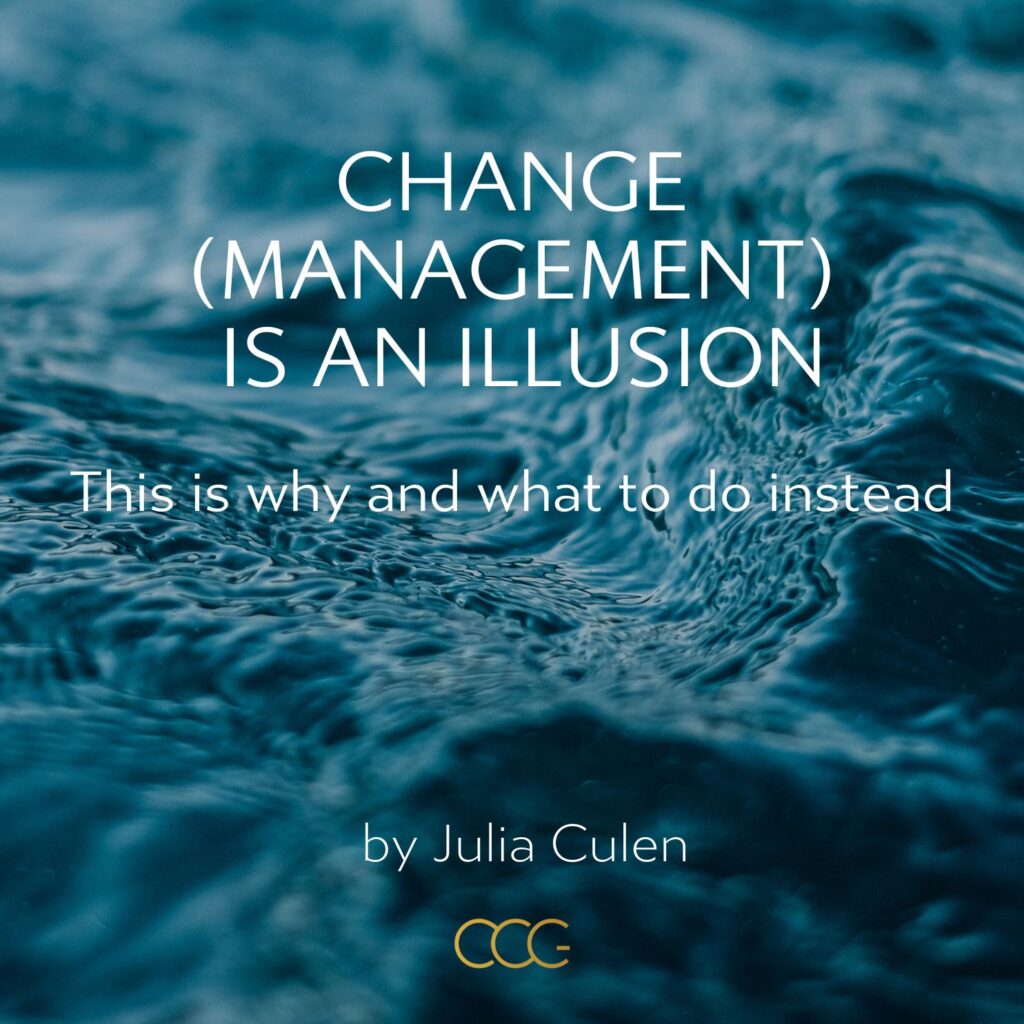
Having worked in the industry of “Change”, “Change Management” and “Transformation Management” for decades now I have to admit, I now believe we got it all wrong.
In this blog post, I will share the reasons why I feel we got it wrong and how to get it right.
At least not in the way we used to see it: as some kind of isolated event that has a beginning, a middle, and an end. Chang is an illusion in a world where literally everything is in constant motion, morphing, emerging, and transforming all the time.
Change creates the illusion that there is a state other than Change. That there is some kind of stability. Well, we could say there are phases of relative stability; yet, this is also the result of a billion micro efforts that are needed to maintain a balance, creating the illusion of stability.
And even if Change Management might have made sense in the past on some occasions, now is the time to step up our game and acknowledge the fact that change is the nature of life and not something that is up to us to decide.
Change Management – the idea that change is something that can be managed and controlled – is the direct result of a deterministic and reductionist world-view. We want to “manage” – meaning to plan, execute, and control – change, that in its nature is unpredictable and emerging in every moment as a result of the last moment.
Recognizing the need for Change Management indicates that you have already fallen out of sync with the world around you. You may have missed important signals and attempted to impose stability, leading to a stagnant and rigid organization. Trying to maintain the status quo can be detrimental—it’s akin to stifling what needs to evolve. Only what is lifeless remains unchanged, and even the inanimate continues to undergo transformation and decay.
I am already dreading people who try to change something for the better without understanding the first thing about it. Changing something most of the time implies exerting some kind of pressure, will, or even soft violence upon (soft violence for me is a way of manipulation, and using tools to force your will upon others or yourself).
Change, in the sense of exerting your willpower, is a way to resist what is and is often highly conceptual. Who knows what is best for everyone? By wanting things to be different, you lack respect for their intricate nature.
So what to do instead? Here are some suggestions.
Understanding the world is a far better approach than trying to control or change it. By seeking to understand, we engage with the world respectfully, without judgment or the desire to alter it. Acknowledging “what is” serves as a good first step.
2. When you are in sync with yourself or the world, change is not needed, because you are already in alignment
The reason organizations wake up to a massive pressure for change is their loss of connection with their stakeholders and the world in general, as well as internally. They have created multiple sub-realities that are out of alignment with each other and their surroundings.
3. Aim for coherence, connection, and alignment
Silence, calm mind, listening, sensing, responding, and noticing the quiet voices and whispers from the edges will guide you.
4. Think about change not as one big step but as micro-dosing
If you are in alignment, you will constantly adjust in small, digestible steps that come naturally. You will know and intuitively take the adequate steps, one at a time, and integrate them into your life, work, routines, and behavior.
5. “Change” is the result! Not a goal.
Change is the result of micro-adjustments! Change is not the goal, nor is it the process; it is what happens when you live life in alignment with everything. One day, you will wake up and realize how much has changed: that you’ve made a big leap over time and that you’ve exceeded your wildest hopes.
6. Change is only healthy when it is effortless, because it is the natural result of an elegant and aligned way of being.
Rather than being obsessed with change, focus on alignment. Resisting life by forcing yourself upon it will only lead to pain, drama, and failure. Being aligned, on the other hand, will bring you peace of mind, deep satisfaction, and effortless success.
Let me know what you think. e-mail me. [email protected]
or comment here!